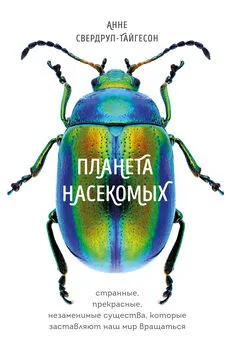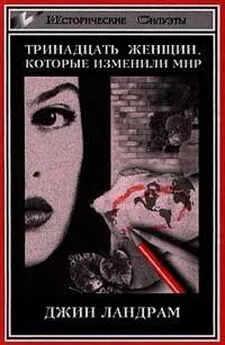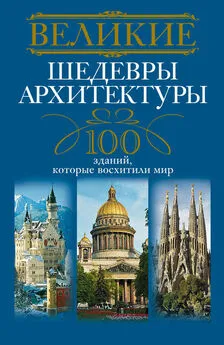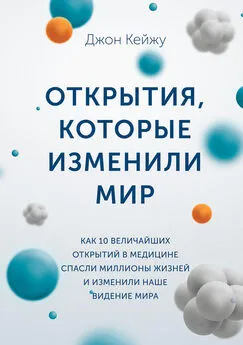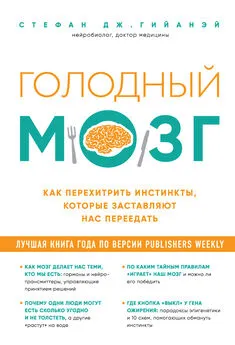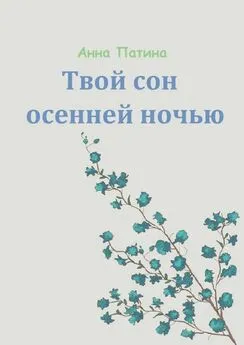Анне Свердруп-Тайгесон - Планета насекомых: странные, прекрасные, незаменимые существа, которые заставляют наш мир вращаться
- Название:Планета насекомых: странные, прекрасные, незаменимые существа, которые заставляют наш мир вращаться
- Автор:
- Жанр:
- Издательство:Эксмо
- Год:2020
- Город:Москва
- ISBN:978-5-04-099068-9
- Рейтинг:
- Избранное:Добавить в избранное
-
Отзывы:
-
Ваша оценка:
Анне Свердруп-Тайгесон - Планета насекомых: странные, прекрасные, незаменимые существа, которые заставляют наш мир вращаться краткое содержание
Последняя часть книги повествует о тесной взаимосвязи насекомых с одним единственным видом – людьми. О том, как насекомые обеспечивают нас пищей, работают санитарами природы и снабжают нас нужными вещами, начиная от мёда и заканчивая антибиотиками.
Планета насекомых: странные, прекрасные, незаменимые существа, которые заставляют наш мир вращаться - читать онлайн бесплатно ознакомительный отрывок
Интервал:
Закладка:
Elven, H. & Aarvik, L. ‘Insekter Insecta’, sourced in 2017 from Artsdatabanken https://artsdatabanken.no/Pages/ 135656 (2017).
Falck, M. ‘La vevkjerringene veve videre’, Insektnytt 29 (2004), pp. 57–60.
Franks, N. R. & Richardson, T. ‘Teaching in Tandem-Running Ants’, Nature 439 (2006), p. 153.
Frye, M. A. ‘Visual Attention: A Cell that Focuses on One Object at a Time’. Current Biology 23 (2013), R61—3.
Gonzalez-Bellido, P. T., Peng, H., Yang, J. et al. ‘Eight Pairs of Descending Visual Neurons in the Dragonfly Give Wing Motor Centers Accurate Population Vector of Prey Direction’, Proceedings of the National Academy of Sciences 110 (2013), pp. 696–701.
Gopfert, M. C., Surlykke, A. & Wasserthal, L. T. ‘Tympanal and Atympanal “Mouth-Ears” in Hawkmoths (Sphingidae)’. Proc Biol Sci 269 (2002), pp. 89–95.
Jabr, F. ‘How Did Insect Metamorphosis Evolve?’ Sourced in 2017 from https://www.scienticamerican.com/article/insect-metamorphosis-evolution/ (2012).
Leadbeater, E. & Chittka, L. ‘Social Learning in Insects – From Miniature Brains to Consensus Building’, Current Biology 17 (2007), R703—R713.
Minnich, D. E. ‘The Chemical Sensitivity of the Legs of the Blowfly, Calliphora vomitoria Linn., to Various Sugars’, Zeitschrift für vergleichende Physiologie 11 (1929), pp. 1—55.
Montealegre-Z., F., Jonsson, T., Robson-Brown, K. A. et al. ‘Convergent Evolution Between Insect and Mammalian Audition’, Science 338 (2012), pp. 968–971.
Munz, T. The Dancing Bees: Karl von Frisch and the Discovery of the Honeybee Language, The University of Chicago, 2016.
‘Eremitten yttes til åpen soning’. Press. NINA. Sourced in 2017 from http://www.nina.no/english/News/News-article/ArticleId/4321 (2017).
Ranius, T. & Hedin, J. ‘The Dispersal Rate of a Beetle, Osmoderma eremita, Living in Tree Hollows’, Oecologia 126 (2001), pp. 363–370.
Shuker, K. P. N. The Hidden Powers of Animals: Uncovering the Secrets of Nature, Marshall Editions Ltd., London, 2001.
Tibbetts, E. A. ‘Visual Signals of Individual Identity in the Wasp Polistes fuscatus’, Proceedings of the Royal Society of London. Series B: Biological Sciences 269 (2002), pp. 1423–1428.
ЧАСТЬ 2
Six-legged Sex: Dating, Mating and Parenting Banerjee, S., Coussens, N. P., Gallat, F. X. et al. ‘Structure of a Heterogeneous, Glycosylated, Lipid-Bound, in Vivo-Grown Protein Crystal at Atomic Resolution from the Viviparous Cockroach Diploptera punctate’, IUCrJ 3 (2016), pp. 282–293.
Birch, J. & Okasha, S. ‘Kin Selection and Its Critics’, BioScience 65 (2015), pp. 22–32.
Boos, S., Meunier, J., Pichon, S. & Kölliker, M. ‘Maternal Care Provides Antifungal Protection to Eggs in the European Earwig’, Behavioral Ecology 25 (2014), pp. 754–761.
Borror, D. J., Triplehorn, C. A. & Johnson, N. F. An Introduction to the Study of Insects, Saunders College Pub, Philadelphia, 1989.
Brian, M. B. Production Ecology of Ants and Termites, Cambridge University Press, 1978.
Eady, P. E. & Brown, D. V. ‘Male-female Interactions Drive the (Un) repeatability of Copula Duration in an Insect’, Royal Society Open Science 4 (2017), 160962.
Eberhard, W. G. ‘Copulatory Courtship and Cryptic Female Choice in Insects’, Biological Reviews 66 (1991), pp. 1—31.
Fedina, T. Y. ‘Cryptic Female Choice during Spermatophore Transfer in Tribolium castaneum (Coleoptera: Tenebrionidae)’, Journal of Insect Physiology 53 (2007), pp. 93–98.
Fleming, N. ‘Which Life Form Dominates on Earth?’ Sourced in 2017 from http://www.bbc.com/earth/story/ 20150211-whats-the-most-dominant-life-form (2015).
Folkehelseinstituttet . ‘Hjortelusflue’, sourced in 2017 from https://www.fhi.no/nettpub/skadedyrveilederen/fluerog-mygg/hjortelusflue-/ (2015).
Hamill, J. ‘What a Buzz Kill: Male Bees’ Testicles EXPLODE When They Reach Orgasm’, sourced in 2017 from https://www.thesun.co.uk/news/1926328/male-beestesticlesexplode-when-they-reach-orgasm/ (2016)
Lawrence, S. E. ‘Sexual Cannibalism in the Praying Mantid, Mantis religiosa: A Field Study’, Animal Behaviour 43 (1992), pp. 569–583.
Lüpold, S., Manier, M. K., Puniamoorthy, N. et al. ‘How Sexual Selection Can Drive the Evolution of Costly Sperm Ornamentation’, Nature (2016), pp. 533–535.
Maderspacher, F. ‘All the Queen’s Men’, Current Biology 17 (2007), R191—R195.
Nowak, M. A., Tarnita, C. E. & Wilson, E. O. ‘The Evolution of Eusociality’, Nature 466 (2010), pp. 1057–1062.
Pitnick, S., Spicer, G. S. & Markow, T. A. ‘How Long Is a Giant Sperm?’ Nature 375 (1995), p. 109.
Schwartz, S. K., Wagner, W. E. & Hebets, E. A. ‘Spontaneous Male Death and Monogyny in the Dark Fishing Spider’, Biology Letters 9 (2013).
Shepard, M., Waddil, V. & Kloft, W. ‘Biology of the Predaceous Earwig Labidura riparia (Dermaptera: Labiduridae)’, Annals of the Entomological Society of America 66 (1973), pp. 837—41.
Sivinski, J. ‘Intrasexual Aggression in the Stick Insects Diapheromera veliei and D. Covilleae and Sexual Dimorphism in the Phasmatodea’, Psyche 85 (1978), pp. 395–405.
Williford, A., Stay, B. & Bhattacharya, D. ‘Evolution of a Novel Function: Nutritive Milk in the Viviparous Cockroach, Diploptera punctate’, Evolution & Development 6 (2004), pp. 67–77.
ЧАСТЬ 3
Eat or Be Eaten: Insects in the Food Chain Britten, K. H., Thatcher, T. D. & Caro, T. ‘Zebras and Biting Flies: Quantitative Analysis of Reflected Light from Zebra Coats in Their Natural Habitat’, PLOS ONE 11 (2016), e0154504.
Caro, T., Izzo, A., Reiner Jr., R. C. et al. ‘The Function of Zebra Stripes’, Nature Communications 5 (2014), 3535.
Caro, T. & Stankowich, T. ‘Concordance on Zebra Stripes: A Comment on Larison et al. Royal Society Open Science 2 (2015).
Darwin, C. Darwin Correspondence Project. Sourced in 2017 from http://www.darwinproject.ac.uk/letter/DCPLETT-2814.xml (1860).
Dheilly, N. M., Maure, F., Ravallec, M. et al. ‘Who Is the Puppet Master? Replication of a Parasitic Wasp-Associated Virus Correlates with Host Behaviour Manipulation’, Proceedings of the Royal Society B: Biological Sciences 282 (2015).
Eberhard, W. G. ‘The Natural History and Behavior of the Bolas Spider Mastophora dizzydeani SP. n. (Araneidae)’, Psyche 87 (1980), pp. 143–169.
Haynes, K. F., Gemeno, C., Yeargan, K. V. et al. ‘Aggressive Chemical Mimicry of Moth Pheromones by a Bolas Spider: How Does This Specialist Predator Attract More Than One Species of Prey?’, Chemoecology 12 (2002), pp. 99—105.
Larison, B., Harrigan, R. J., Thomassen, H. A. et al. ‘How the Zebra Got its Stripes: A Problem with Too Many Solutions’, Royal Society Open Science 2 (2015).
Libersat, F. & Gal, R. ‘What Can Parasitoid Wasps Teach us about Decision-Making in Insects?’ Journal of Experimental Biology 216 (2013), pp. 47–55.
Marshall, D. C. & Hill, K. B. R. ‘Versatile Aggressive Mimicry of Cicadas by an Australian Predatory Katydid’, PLOS ONE 4 (2009), e4185.
Melin, A. D., Kline, D. W., Hiramatsu, C. & Caro, T. ‘Zebra Stripes Through the Eyes of their Predators, Zebras, and Humans’, PLOS ONE 11 (2016), e0145679.
Yeargan, K. V. ‘Biology of Bolas Spiders’, Annual Review of Entomology 39 (1994), pp. 81–99.
ЧАСТЬ 4
Insects and Plants: A Never-ending Race Babikova, Z., Gilbert, L., Bruce, T. J. A. et al. ‘Underground Signals Carried Through Common Mycelial Networks Warn Neighbouring Plants of Aphid Attack’, Ecology Letters 16 (2013), pp. 835–843.
Barbero, F., Patricelli, D., Witek, M. et al. ‘Myrmica Ants and Their Butterfly Parasites with Special Focus on the Acoustic Communication’, Psyche 2012: 11 (2012).
Dangles, O. & Casas, J. ‘The Bee and the Turtle: A Fable from Yasuní National Park’, Frontiers in Ecology and the Environment 10 (2012), pp. 446–467.
De la Rosa, C. L. ‘Additional Observations of Lachryphagous Butterflies and Bees’, Frontiers in Ecology and the Environment 12 (2014), p. 210.
Department of Agriculture and Fisheries, B. Q. ‘The Prickly Pear Story’, sourced in 2017 from https://www.daf.qld.gov.au/__data/assets/pdf_le/0014/55301/IPA-Prickly-Pear-Story-PP62.pdf (2016).
Ekblom, R. ‘Smörbolls ugornas fantastiska värld’, Fauna och Flora 102 (2007) pp. 20–22.
Evans, T. A., Dawes, T. Z., Ward, P. R. & Lo, N. ‘Ants and Termites Increase Crop Yield in a Dry Climate’, Nature Communications 2: (2011), Article No. 262.
Grinath, J. B., Inouye, B. D. & Underwood, N. ‘Bears Benefit Plants Via a Cascade with both Antagonistic and Mutualistic Interactions’, Ecology Letters 18 (2015), pp. 164–173.
Hansen, L. O. Pollinerende insekter i Maridalen. Årsskrift. 132 pages, Maridalens Venner, 2015.
Hölldobler, B. & Wilson, E. O. Journey to the Ants: A Story of Scientific Exploration, Belknap Press of Harvard University Press, Cambridge, Massachusetts, 1994.
Lengyel, S., Gove, A. D., Latimer, A. M. et al. ‘Convergent Evolution of Seed Dispersal by Ants, and Phylogeny and Biogeography in Flowering Plants: A Global Survey’, Perspectives in Plant Ecology Evolution and Systematics 12 (2010), pp. 43–55.
McAlister, E. The Secret Life of Flies. Natural History Museum, London, 2017.
Midgley, J. J., White, J. D. M., Johnson, S. D. & Bronner, G.N. ‘Faecal Mimicry by Seeds Ensures Dispersal by Dung Beetles’, Nature Plants 1 (2015), 15141.
Moett, M. W. Adventures Among Ants. A Global Safari with a Cast of Trillions, University of California Press, 2010.
Nedham, J. Science and Civilisation in China. Volume 6, Biology and Biological Technology: Part 1: Botany, Cambridge University Press, Cambridge, UK, 1986.
Oliver, T. H., Mashanova, A., Leather, S. R. et al. Ant semiochemicals limit apterous aphid dispersal. Proceedings of the Royal Society B: Biological Sciences 274 (2007), pp. 3127–3131.
Patricelli, D., Barbero, F., Occhipinti, A. et al. ‘Plant Defences Against Ants Provide a Pathway to Social Parasitism in Butterflies’, Proceedings of the Royal Society B: Biological Sciences 282 (2015), 20151111.
Simard, S. W., Perry, D. A., Jones, M. D. et al. ‘Net Transfer of Carbon between Ectomycorrhizal Tree Species in the Field’, Nature 388 (1997), pp. 579—82.
Stiling, P., Moon, D. & Gordon, D. ‘Endangered Cactus Restoration: Mitigating the Non-Target Eects of a Biological Control Agent (Cactoblastis cactorum) in Florida’, Restoration Ecology 12 (2004), pp. 605–610.
Stockan, J. A. & Robinson, E. J. H. (Eds). Wood Ant Ecology and Conservation. Ecology, Biodiversity and Conservation, Cambridge University Press, Cambridge, 2016.
Wardle, D. A., Hyodo, F., Bardgett, R. D. et al. ‘Long-term Aboveground and Belowground Consequences of Red Wood Ant Exclusion in Boreal Forest’, Ecology 92 (2011), 645–656.
Warren, R. J. & Giladi, I. ‘Ant-Mediated Seed Dispersal: A Few Ant Species (Hymenoptera: Formicidae) Benefit many Plants’, Myrmecological News 20 (2014), pp. 129—40.
Читать дальшеИнтервал:
Закладка:
